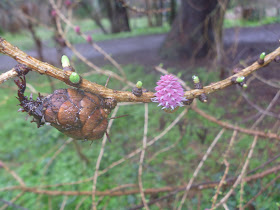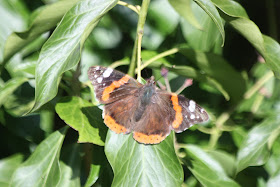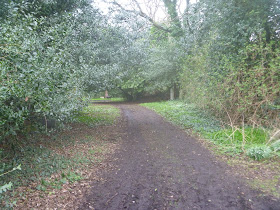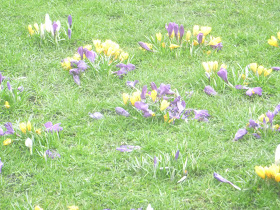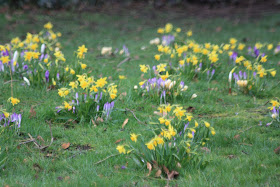We had a lovely walk yesterday in the Hermitage of Braid. We started at Blackford Pond, where we had heard toads were around (there have been a lot of toads seen in the area recently, making their way to the pond to spawn). There are signs around the area warning people to "Mind Your Feet! Tiny Toads Migrating!"
The Midmar Paddock Twitter timeline has photos and videos of the local toads (and other nature sightings in the area). Unfortunately, we didn't see any toads at all! However, we did see this female Shoveler who has been at the pond over the past few weeks, hopefully she'll be able to find a mate soon.
Although superficially looking like most other female ducks, the Shoveler is easily recognizable by her large shovel shaped bill.
Mute Swans seem to be about to nest at the edge of the pond, here's just one of them
The pond is surrounded by vegetation, including a few clumps of Marsh Marigolds
We then walked to the Hermitage of Braid, passing Midmar Paddock, which is still threatened with development (it would be a shame to lose this green space, which has always felt like an integral part of the Hermitage of Braid and Blackford Pond Local Nature reserve).
The walls around Midmar Paddock are beautifully covered in ferns, mostly Maidenhair Spleenwort.
We then walked into the Hermitage and along the Braid Burn
We were very pleased to see several patches of Wood Anemone in full bloom.
and this Grey Wagtail that was moving too quickly to allow for a clear photo









